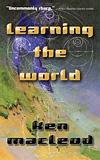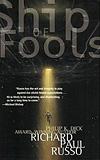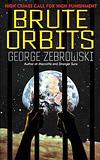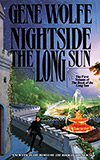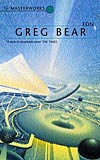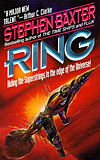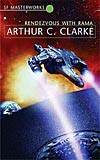Neil Armstrong Ascends One Last Time

“Nine summers ago, I went for a visit,
To see if the moon was green cheese.
When we arrived, people on earth asked: “Is it?”
We answered: “No cheese, no bees, no trees.”
There were rocks and hills and a remarkable view
Of the beautiful earth that you know,
It’s a nice place to visit, and I’m certain that you
will enjoy it when you go.”
Neil Armstrong (1930-2012),
written 1978 for the pleasure of children
Thanks for all you did, Mr. Armstrong — both on earth and above it.
The Real Rock Rats
New Scientist scored an interview with real-life Rock Rats, Eric Anderson and Chris Lewicki of Planetory Resources about that asteroid mining operation you probably heard of a few months ago.
The first exciting steps are closer than you might think. “We’re launching the first telescopes” they say, “in 18 months“. A February 2014 launch date would certainly help convince me this project might actually happen. They also plan on having “10-15” of them over the next 5 years.
They go on to talk about how they’ll find promising asteroids, and then send rocket-powered versions of these telescopes to the rocks, themselves (very cool). Then they unveil this little tidbit:
There is one incredible concept: We could place the asteroid in an orbit between the Earth and Mars to allow astronauts who want to get there to hop on and off it like a bus. Think about that. You could make a spacecraft out of the asteroid.
Wha-what? These are asteroids that will also be strategically positioned to provide rocket fuel in various stages on the way to Mars. According to Anderson, future Mars programs may rely on Planetary Resources for fuel:
One of our first goals is to deploy networks of orbital rocket propellant depots, effectively setting up gas stations throughout the inner solar system to open up highways for spaceflight.
In the meantime, the search for killer asteroids is being called off:
When we visited the sea lab in early July, staff were getting ready for a visit from James Cameron and Sylvia Earle, in the hopes of drumming up more political support amidst a flagging budget. But in late July, the bad news surfaced: NOAA announced budget cuts that are likely to imperil it for good. “There were signals that the budget was tight but we didn’t think it would be zeroed out,” Thomas Potts, director of Aquarius, told ABC News in July, when the $5 million budget was killed. The lab, which is used extensively during the year for a wide spectrum of non-space-related oceanic research, is no longer mission-ready.
This, despite NASA estimates that there are 4,700 potentially hazardous asteroids. How does NASA define “potentially hazardous”?
NASA defines a potentially hazardous asteroid as one large enough to survive the intense heat generated by entry into the atmosphere and cause damage on a regional scale or worse.
I know the overall odds of a strike are statistically low at any given time, but, you know, considering the world could end, isn’t $5 million a pretty paltry sum, given that the US measures its GDP in the trillions?
How the Angels See the Universe
Be sure to watch it in HD! Here’s the video description on YouTube:
This animated flight through the universe was made by Miguel Aragon of Johns Hopkins University with Mark Subbarao of the Adler Planetarium and Alex Szalay of Johns Hopkins. There are close to 400,000 galaxies in the animation, with images of the actual galaxies in these positions (or in some cases their near cousins in type) derived from the Sloan Digital Sky Survey (SDSS) Data Release 7. Vast as this slice of the universe seems, its most distant reach is to redshift 0.1, corresponding to roughly 1.3 billion light years from Earth. SDSS Data Release 9 from the Baryon Oscillation Spectroscopic Survey (BOSS), led by Berkeley Lab scientists, includes spectroscopic data for well over half a million galaxies at redshifts up to 0.8 — roughly 7 billion light years distant — and over a hundred thousand quasars to redshift 3.0 and beyond.
For more information about BOSS and the latest data release, go to http://newscenter.lbl.gov/news-releases/2012/08/08/boss-sdss-dr9/.
Curiosity Advances Science Fact, Tomorrow

If, like us, you plan to stay up bleary-eyed, watching Curiosity land and deploy on the surface of Mars, you may want to catch up on what it is you’ll be watching for.
We’ve all probably read about the seven minutes of terror, during which the rover will be perilously hurtling toward the planet surface, hopefully decelerating to a gentle landing. When those seven minutes are over, we should be getting information from several sources. MSNBC describes the three different ways Curiosity will communicate with Earth:
Controllers on Earth will have three ways of hailing Curiosity as it trundles around Gale Crater. Two are direct links through NASA’s Deep Space Network, a worldwide collection of antennas. It provides both a fixed low-gain antenna, best for basic commands and emergencies, and a pointable high-gain antenna for complex commands.
Curiosity also has a higher-speed ultra-high frequency (UHF) communications system that can send signals to spacecraft orbiting Mars, which in turn would relay them to Earth.
To send back imagery, Curiosity must stay in touch with the Mars Reconnaissance Orbiter and Mars Odyssey spacecraft, two probes orbiting Mars that each can talk to the rover twice a day. (Odyssey is currently recovering from the loss of one of its three reaction wheels.)
Business Insider scored a geektastic inventory of Curiosity’s space-age toolset:
For two of these special instruments, NASA turned to Honeybee Robotics, a development firm headquartered in Manhattan. Building on previous work for the Spirit and Opportunity rovers, Honeybee developed the Sample Manipulation System (SMS) and the Dust Removal Tool (DRT). These tools are critical to investigating Mars’ ability to sustain life — in the past and present.
Natalie Wolchover, of the The Christian Science Monitor, wonders whether we might be visiting distant relatives:
If life exists on Mars, then we might be ethnic Martians ourselves, scientists told Life’s Little Mysteries. They explained that the small coincidence of having two life-bearing planets right next door to one another gets cleared up if one of the planets actually seeded life on the other — a concept called “panspermia.” According to Pavlov, hundreds of thousands of Martian meteorites are strewn across Earth. These were hurled into space during past planetary collisions (such as the bash that left Mars with a crater covering nearly half its surface). One of these chunks of Mars could feasibly have contained spores that lay dormant during the interplanetary commute to Earth, and then blossomed upon arrival, some 3.8 billion years ago.
The main event should happen around 12:31 p.m. Central Standard Time. The NASA webcast starts at 8:30 p.m. PDT on NASA TV. If you want to be twitter friends with the rover (who wouldn’t!) follow @MarsCuriosity on Twitter (while there, follow us, @WWEnd).
SpaceX’s Dragon Spacecraft Connects to the International Space Station
The Unconsenting Skies
 Here’s a followup of sorts to our first piece of C.S. Lewis verse, written “against too many writers of science fiction.” Despite being a rather successful science fiction writer himself, Lewis had a dark view of supposed scientific progress in general, as is clear from this pessimistic look into the future of space travel. Fans of Lewis’ more religiously-minded literature might be surprised at his frank imagery, but he wasn’t as shy about certain things as his readers. As with the previous installment, this bit of verse is available in his Poems collection.
Here’s a followup of sorts to our first piece of C.S. Lewis verse, written “against too many writers of science fiction.” Despite being a rather successful science fiction writer himself, Lewis had a dark view of supposed scientific progress in general, as is clear from this pessimistic look into the future of space travel. Fans of Lewis’ more religiously-minded literature might be surprised at his frank imagery, but he wasn’t as shy about certain things as his readers. As with the previous installment, this bit of verse is available in his Poems collection.
Prelude to Space
An EpithalamiumSo Man, grown vigorous now,
Holds himself ripe to breed,
Daily devises how
To ejaculate his seed
And boldly fertilize
The black womb of the unconsenting skies.Some now alive expect
(I am told) to see the large,
Steel member grow erect,
Turgid with the fierce charge
Of our whole planet’s skill,
Courage, wealth, knowledge, concentrated will;Straining with lust to stamp
Our likeness on the abyss—
Bombs, gallows, Belsen camp,
Pox, polio, Thais’ kiss
Or Judas’, Moloch’s fires
And Torquemada’s (sons resemble sires).Shall we, when the grim shape
Roars upward, dance and sing?
Yes: if we honour rape,
If we take pride to fling
So bountifully on space
The sperm of our long woes, our large disgrace.
The Inner Galaxy
 Loren Eiseley (1907-1977) was not a science fiction writer, but he was a science writer, and a poet. A friend of mine recently shared some excerpts from Eiseley’s essay collection The Star Thrower, and I enjoyed them enough that I wanted to post one here.
Loren Eiseley (1907-1977) was not a science fiction writer, but he was a science writer, and a poet. A friend of mine recently shared some excerpts from Eiseley’s essay collection The Star Thrower, and I enjoyed them enough that I wanted to post one here.
I remain oppressed by the thought that the venture into space is meaningless unless it coincides with a certain interior expansion, an ever-growing universe within, to correspond with the far flight of the galaxies our telescopes follow from without.
Upon that desolate peak my mind had finally turned inward. It is from that domain, that inner sky, that I choose to speak—a world of dreams, of light and darkness that we will never escape, even on the far edge of Arcturus. The inward skies of man will accompany him across any void upon which he ventures and will be with him to the end of time. There is just one way in which that inward world differs from outer space. It can be more volatile and mobile, more terrible and impoverished, yet withal more ennobling in its self-consciousness, than the universe that gave it birth. To the educators of this revolutionary generation, the transformations we may induce in that inner sky loom in at least equal importance with the work of those whose goals are set beyond the orbit of the moon.
(From the essay “The Inner Galaxy.”)
Space Shuttle Discovery Launch!
Amazing video footage taken from an airplane. I’m in awe and feelin’ a bit sad that there are so few shuttle launches left. Back to capsules atop rockets? Really?
NASA Dreams of a Hundred-Year Starship
 I recently read an article about a joint NASA/DARPA project called the "Hundred-Year Starship". Basically, it’s a year-long study to determine the feasibility of constructing a generation ship for the purpose of colonizing a suitable planet outside our solar system. According to Paul Eremenko, project coordinator at DARPA:
I recently read an article about a joint NASA/DARPA project called the "Hundred-Year Starship". Basically, it’s a year-long study to determine the feasibility of constructing a generation ship for the purpose of colonizing a suitable planet outside our solar system. According to Paul Eremenko, project coordinator at DARPA:
"The 100 Year Starship study is about more than building a spacecraft or any one specific technology. We endeavor to excite several generations to commit to the research and development of breakthrough technologies and cross-cutting innovations across a myriad of disciplines to advance the goal of long-distance space travel, but also to benefit mankind."
Could NASA pull off anything as awesome as all that? Even with DARPA’s help? Well, let’s just say I’m with Capt. Xerox on this one. He sums it up nicely for me:
"I wouldn’t go betting any money on this program actually happening. NASA hasn’t been back to the moon in a generation, never mind heading beyond the solar system…"
Bottom line? Not bloody likely. So says my rational mind anyway.
My geeky SF brain, however, refuses to let go of the notion. I’ve been reading about generation ships and extra-solar colonization forever. The technological wonder of a massive starship with a complete enclosed ecosystem hurtling through space for a hundred years, taking its precious cargo of humanity across the void in search of another Eden? Entire generations of inhabitants living aboard a ship that is the only home they’ve ever known? Never to see the Earth again? That’s the stuff of dreams.
And of course astronomers have been finding new planets at an astonishing pace. How long before they find one worth visiting? Will we be ready to go when they do? How far out would we have to start planning something like that to ever make it a reality? I’d say pretty damn far. So far, in fact, that it sounds like science fiction. Kind of like now. I can’t tell you how excited I am just knowing that there are real scientists out there actually considering this idea; especially at a time when it seems that we’re moving further and further away from the promise of manned space flight.
I say keep on dreaming big, NASA! It has to start somewhere, sometime. And even though it likely won’t happen in our lifetimes there are plenty of us out here who will go right along dreaming with you.
Would you like to know more?
- NASA Ames’ Worden reveals DARPA-funded ‘Hundred Year Starship’ program
- 100 Year Starship: Nasa’s plan to colonise galaxy
- ‘Hundred-Year Starship’ Would Send Space Explorers on One-Way Mission to Mars
- NASA and DARPA Plan ‘Hundred-Year Starship’ To Bring Humans to Other Worlds and Leave Them There Forever
Generation Ship Novels
Until there’s a real ship to take us "where no man has gone before" we’ll have to make do with some great science fictional accounts of what it might be like:
What other great generation ship novels can you think of?



















 Full Details
Full Details
